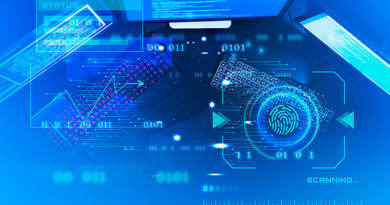Biometric Identification Technology Market Trends in 2020
Biometrics is the technical term for body measurements and calculations, and is the most appropriate means of identification and authentication of an individual in a reliably quick manner, through the use of unique biological traits or characteristics.

These can vary from an individual’s fingerprints, palms, DNA, eyes, voice, or even the use of an electrocardiogram (ECG). In short, biometrics is probably the most accurate means of identifying an individual as these physiological traits are unique. Due to the numerous technological advancements and consistent digital transformation, the global security and cybersecurity market is now, more than ever, vulnerable to identity threats owing to cyber-terrorist attacks, data breaches, etc.
In order to mitigate hacks, scams, and fraud, the use of biometrics to identify ‘who the individual is’, biometrics are being employed and embraced by almost all market sectors, in both emerging and developed economies.
The primary focus of the biometric industry is to improve security and to protect the identity of its users.And, that should come as no surprise!
This write-up aims to touch base with what is currently trending in the biometric identification technology market in 2020 based on the market research analysis.
Multi-biometric identification
Fingerprints were the first biometrics used for identification. Multimodal biometrics, on the other hand, refers to the use of more than one biometric trait to identify and authenticate an individual. For example, this system of identification can employ the use of a fingerprint and an iris scan as well. This combination of multimodal biometrics comparably adds a further level of security and granularity to this security system.
Mobile biometric technology
Mobile biometric technology is quickly becoming a popular form of human identification that is being used in uncontrolled environments like public venues, border crossings, etc.
Mobile biometrics allows for the biometric identification of an individual with the help of a mobile device that can be transposed from one location to another.
Biometric Payment Cards
A biometric payment card includes the integration of a fingerprint scanner into smart cards. This new method of identification is a secure, portable and easy-to-use device. They can also be customized to support access, physical or online identity verification services. These EMV cards use fingerprint recognition instead of a PIN code for cardholder verification.
Cloud-based biometrics
The overhead costs associated with the management of biometric data locally through a physical server by organizations can be quite high. Therefore, it would make sense to have this sensitive information stored on the cloud. It is also a safer, more scalable option. It allows a respective organization to channel capital that would have otherwise been utilized on the up-gradation of local servers. Cloud-based biometric technology also allows for improved speeds due to the reduced system complexities.
Homomorphic encryption implementation
This isn’t a new idea! Homomorphic encryption can be used for privacy-preserving outsourced storage and computation. It refers to a form of encryption that allows computation on ciphertexts, generating an encrypted result which, when decrypted, matches the result of the operations as if they had been performed in plaintext.
This form of encryption makes cloud computing a far more safer ordeal.
Biometric Single Sign-On
This is a biometric identification management system that allows end-users the ability to provide their biometric credentials in place of a PIN code, token or password as a secure method of database access.
It increases productivity by reducing the time taken to find and log-in to several applications, instead, it allows its users to spend more time working. It also reduces bad password habits, thereby, minimizing the potential risks involved.
To Conclude
While biometric security offers numerous advantages, it does allow minor room for controversy. The use of biometric data for other end purposes (function creep) is a major concern. This refers to the use of an individual’s data for purposes other than what it was originally given consent for.
Another factor that may restrain market growth of this industry is the re-use of data presented for biometric checks that may have been captured during transmission, which could then be used for other fraudulent purposes. Nonetheless, with the constant evolution of technological advancements, that advancement in the biometric technologies is giving rise to sensors market. The biometric identification market is expected to continually aim to overcome these challenges to ensure that an individual’s biometric data is accurate, secure and will not be compromised anytime soon.











